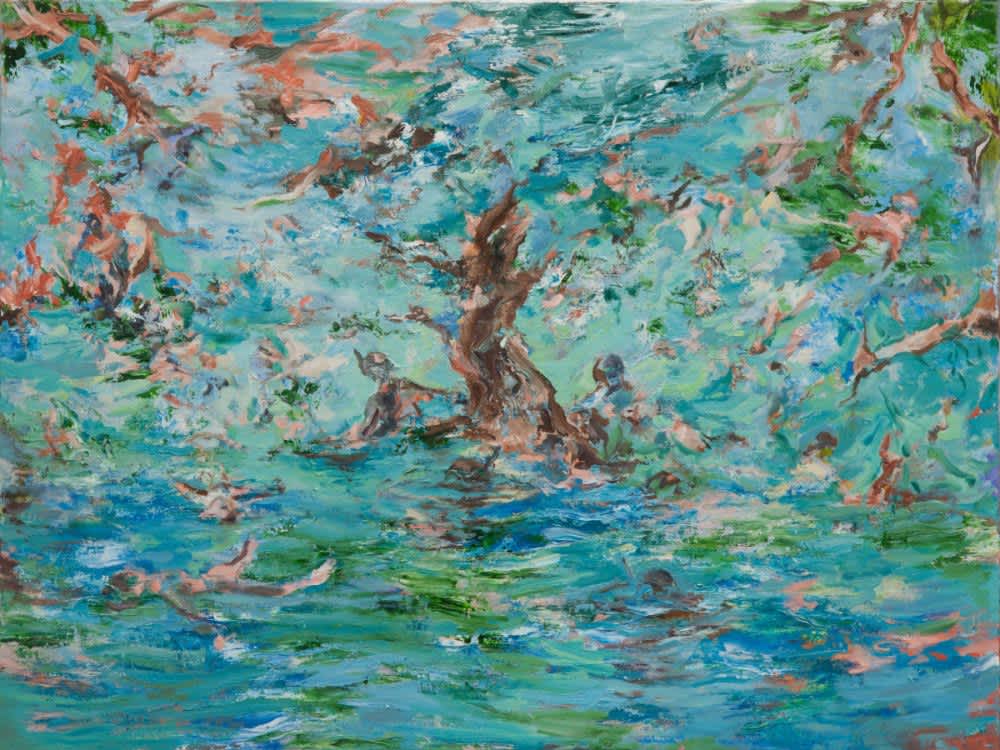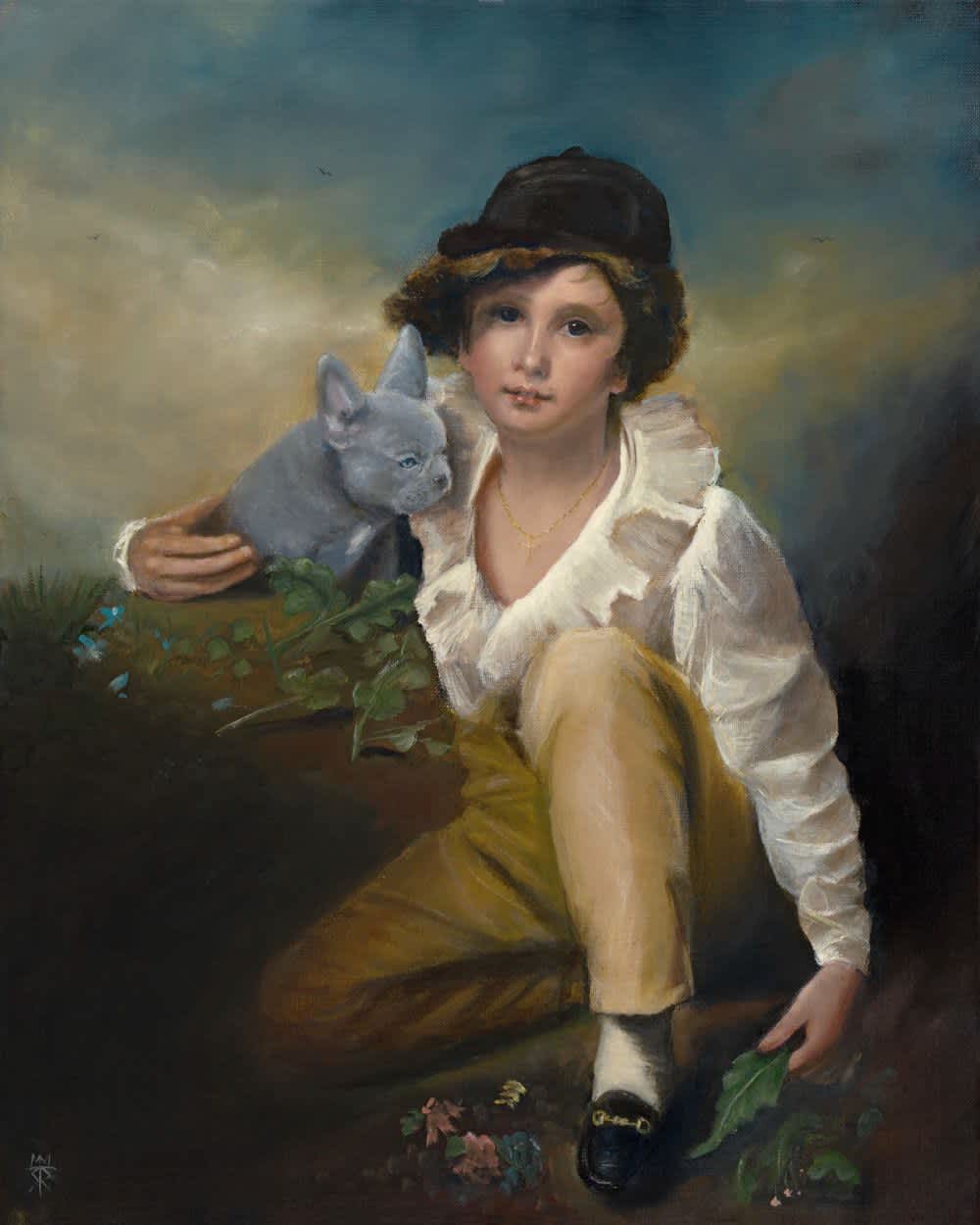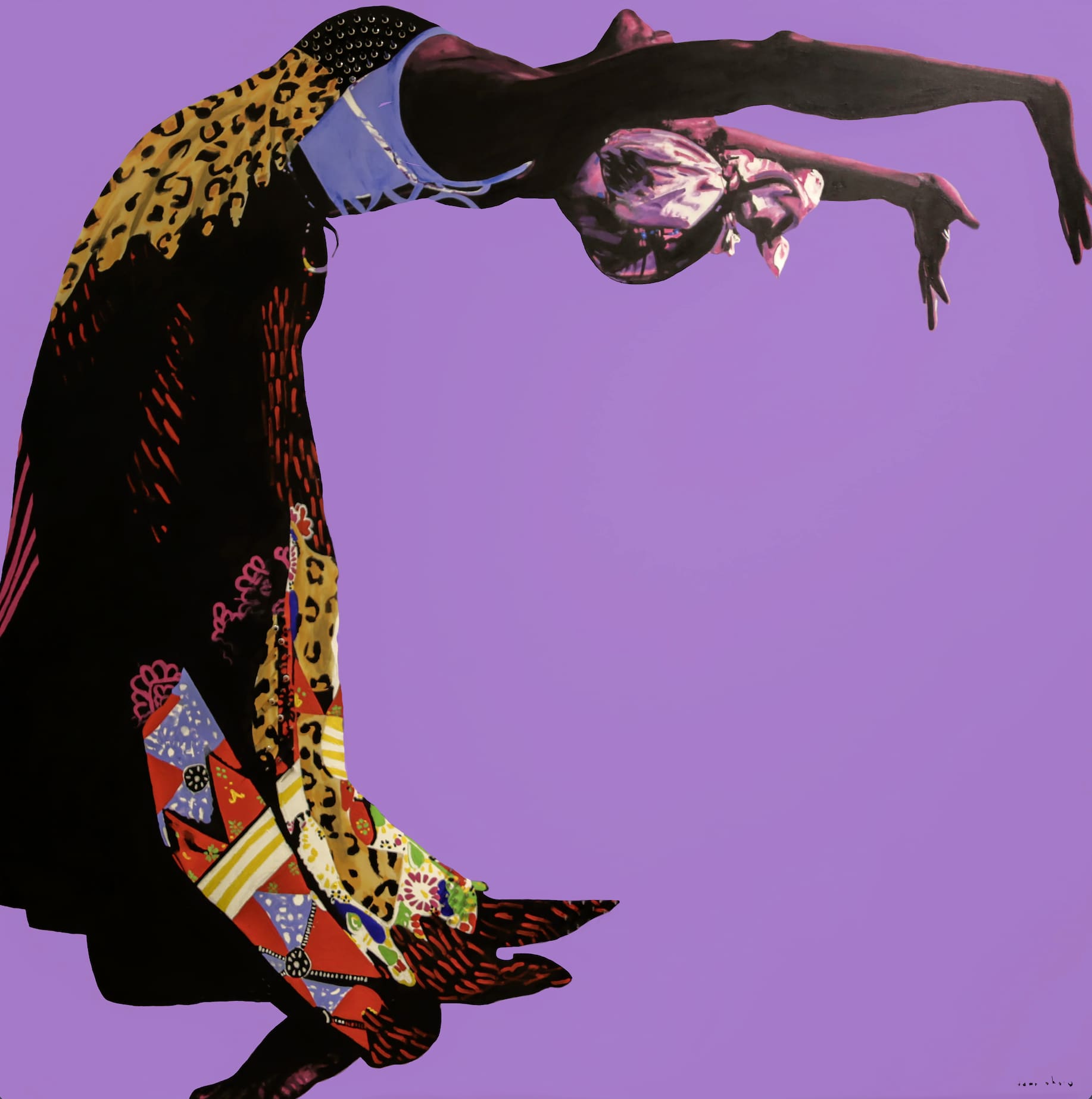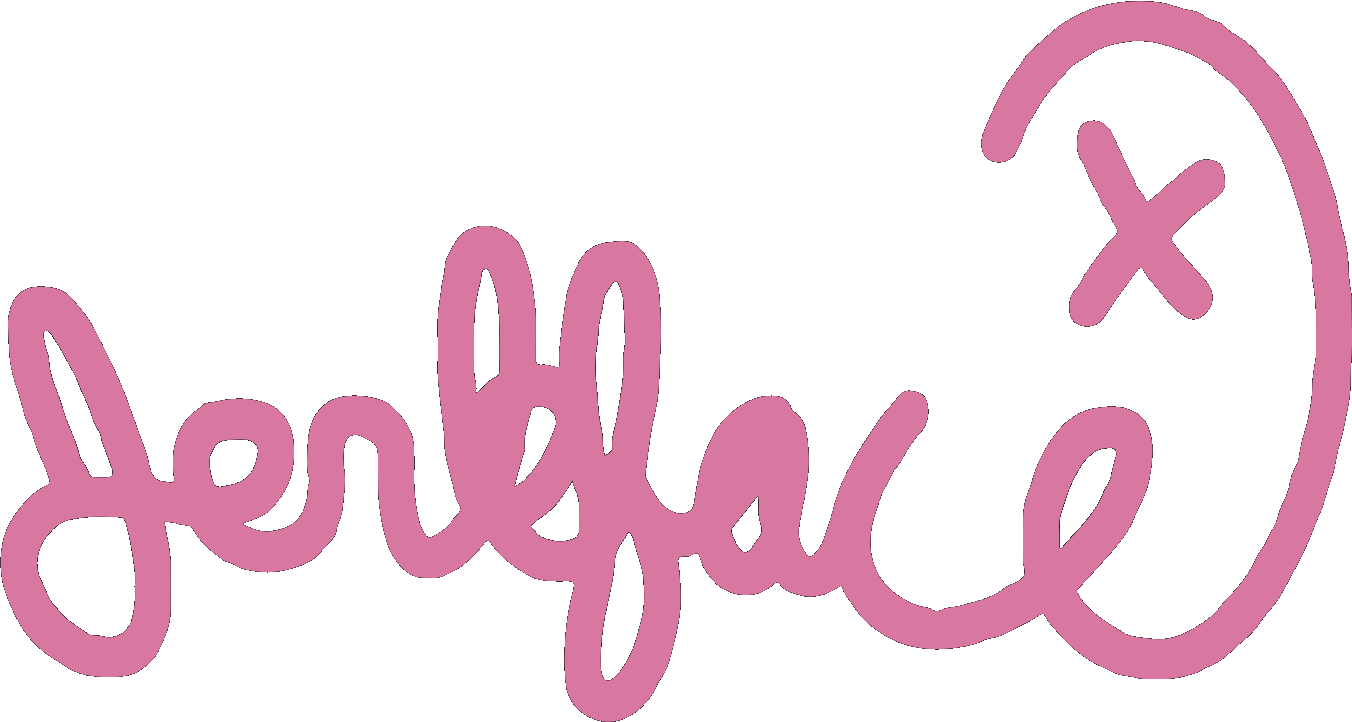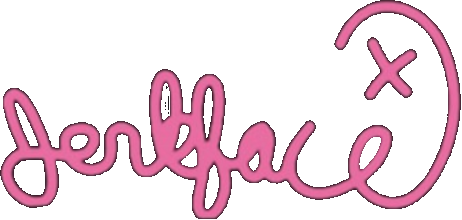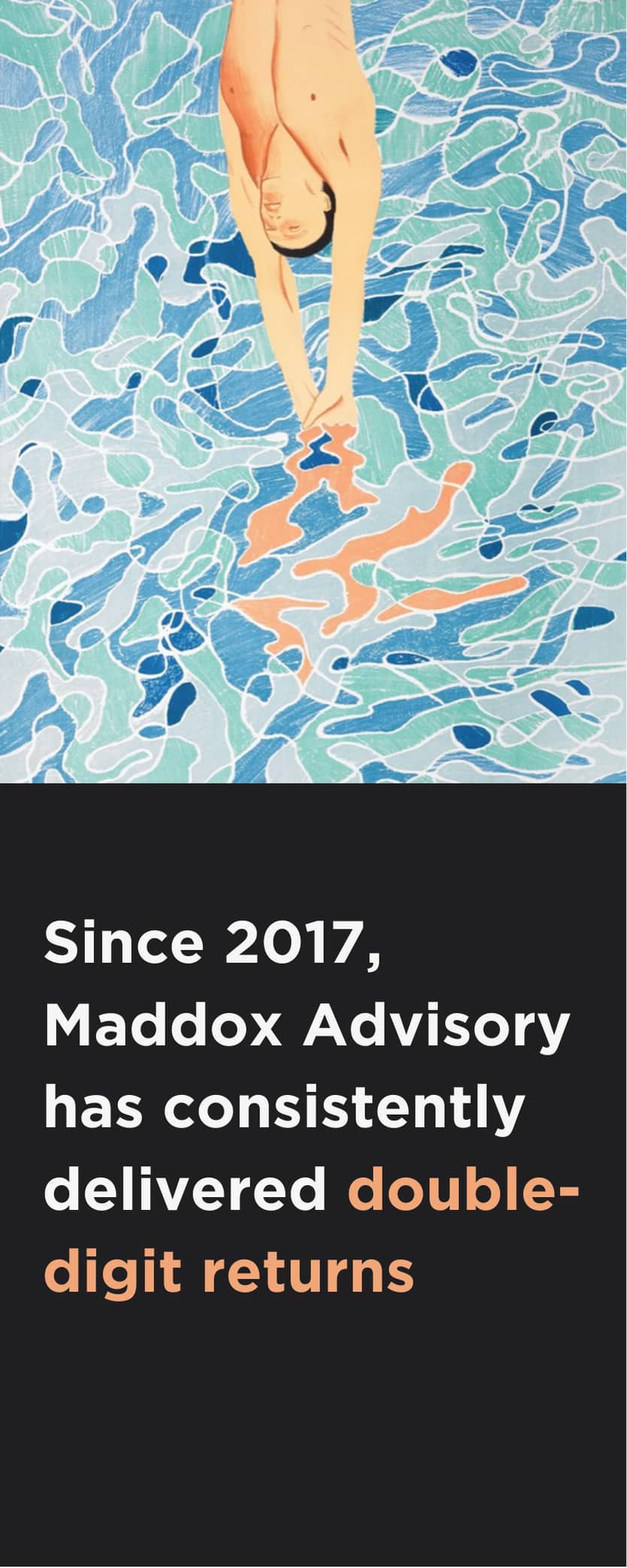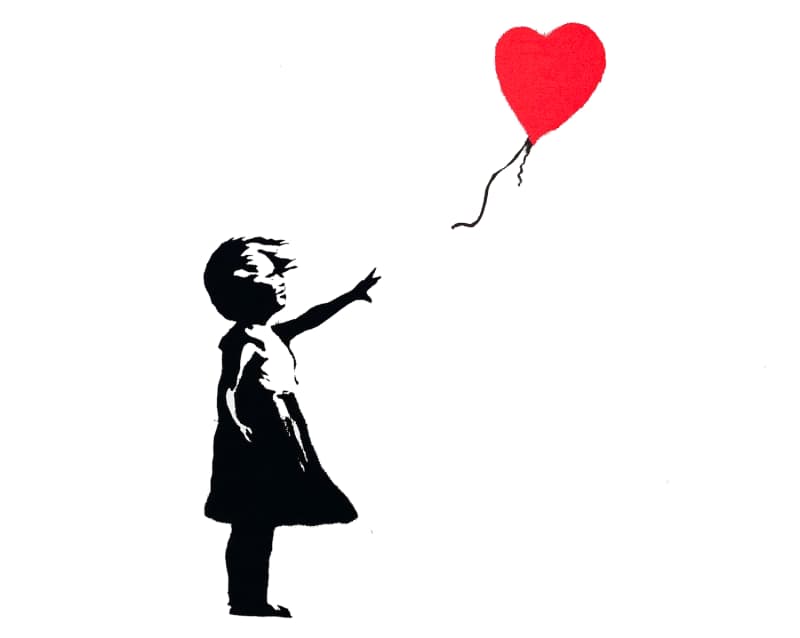From increased representation within the art historical canon to aiding human connection, we look at the reasons behind the surge of interest in figurative painting and explain the key things to remember when you are collecting the genre.
The Mona Lisa, Salvator Mundi, The Splash; painted centuries and continents apart, beyond their astronomical price tags, what do these three artworks have in common? They are all figurative paintings. Unlike nearly any other genre, figurative artwork has remained a steadfast constant throughout the duration of art history. From the Renaissance to Pop, the category has become a pillar of Western art that remains constant, with figurativism becoming more or less prominent depending on changing tastes. Post-pandemic, we have seen resurgence in the popularity of the genre, so we outline everything you need to know before you start collecting figurative painting.
ROSS MUIR, GOOD BOY, 2021
Figurative painting is a wide term and can encompass many elements.
Figurative art can be defined as any artwork that retains strong reference to the real world, particularly the human figure. As a result, the genre can be seen as more of an umbrella term that encompasses many sub-genres such as portraiture, landscape and still-life. Therefore, when seeking out figurative art, do not limit yourself to one sub-genre. See as much as you can and seek out artwork that speaks to you personally. Figurative painting is a wide-reaching and ever-changing category that comprises of many different styles, colourways and processes, so do not limit yourself to one type of work.
MIAZ BROTHERS, AXIS AROUND THE ISLAND, 2020
There is pull towards figurative art that captures a 21st century reality.
A central reason for the stalwart nature of figurativism is its ability to easily reflect an epoch or era. A large component behind the resurgence in figurative painting today is that it offers an opportunity for greater representation in the arts, which reflects a 21st century reality. The genre allows traditionally marginalised groups, such as people of colour, members of the LGBTQ+ community and women, an opportunity to easily paint their authentic experience, in a way that abstract art does not.
An excellent example of a figurative artist who embodies this is Dawn Okoro. Earlier this year, Maddox Gallery hosted her first UK solo exhibition entitled Mad Explosive Spontaneity. Inspired by hip-hop, punk and the compositional techniques used in fashion photography, Okoro’s exhibition included twelve conceptual portraits that captured a moment of spontaneity in each subject’s life. Showcasing an array of creative individuals including Black artists, musicians and actors, Okoro creates artworks that feature subjects who present themselves truthfully and in resistance to societal expectations.
What makes a figurative painting “good” is subjective.
Like all art, with figurative painting there is no objective standard on what makes a work ‘good’ or ‘bad’. As figurative art depicts something representational there is often the pre-disposition to rate a work by its naturalism. However, the best standard for evaluating figurative painting is the viewer’s own intuition. Over the past century, art historians have tended to disregard the seriousness and intellect of figurative artwork in favour of abstract painting, conceptual art and performance art. The easy potential for just a singular and overt narrative left critics uncompelled. Yet, figurative painting can be just as cerebrally stimulating, philosophical and engaging as other genres.
For example, American artist Justin Bower creates multi-layered paintings that interrogate the human condition in a post-religious society dictated by technology. By playing with non-fixed facial features and the hallucinatory effects of Op Art, Bower’s pixelated portraits become an armature for the artist to investigate the effects of the ever-evolving world around us. The style of Bower’s work can be seen as a contemporary fusion between the naturalism and proportion of figurative Renaissance art, mixed with the painterly strokes of Abstract Expressionism.
JUSTIN BOWER, THREE VISITATIONS, 2021
Just because it is representational, does not mean it is not expressive.
Another misconception about figurative art is that it lacks emotional expression in comparison to abstract work. Historically, critics have claimed that abstract art such as the works of Mark Rothko and Willem de Koonig possess the greatest emotional potential as abstract artists often value freedom, spontaneity and personal expression above all other elements, such as representation. However, figurative art can be both emotive and expressive.
Opening on the 26th May, Maddox Gallery Los Angeles are hosting a group show of figurative artworks that examine the human body as a site of emotional transformation. From the vivid colours of Tijana Titin to the contorted figures of Darian Mederos, The Agony and Ecstasy will be a group exhibition demonstrating the poignancy and emotional capability of figurative artwork. With a selection of artists from across the globe, this show considers how the body surrenders itself to extreme emotions and how this can be portrayed through representational art.
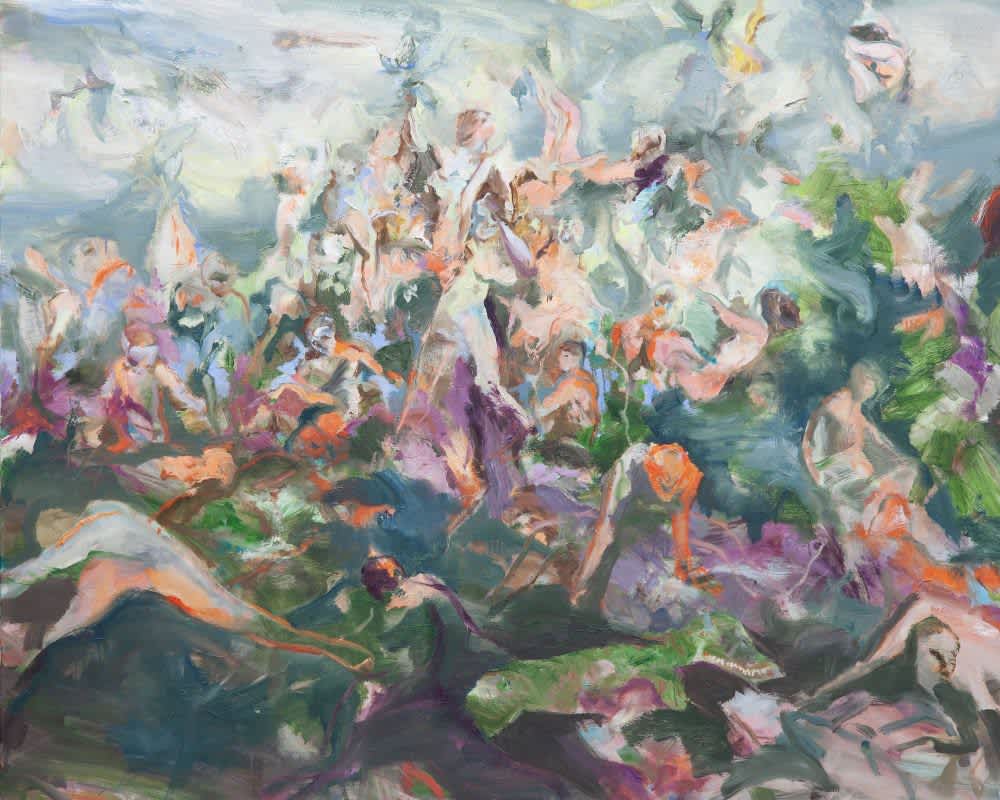
TIJANA TITIN, BODYSCAPE (WATTEAU FLOODED), 2020
